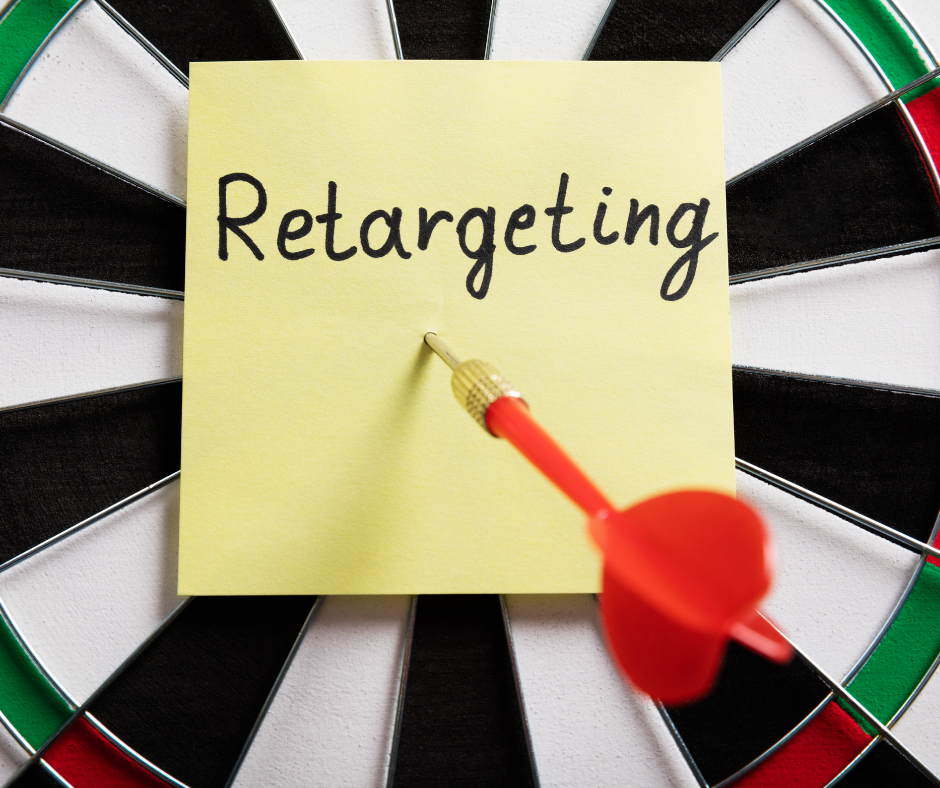Market segmentation means dividing the target market into reasonable and accessible groups based on needs, common interests, demographics, priorities, and other psychological or behavioral criteria used to better understand the target audience. If you know the market segment, you can use this market segmentation in your product, sales, and marketing strategies.
Market segmentation can provide relevant information on how to offer products to different segments and thus drive the product development cycle. Examples of segments are High Income vs. Low income or Male vs. Female.
Table of Contents:
- Definition of the Market segmentation
- The aim of market segmentation
- Examples of market segmentation
- Benefits of market segmentation
- Types of market segmentation
- Other types of market segmentation
- How to get started with market segmentation
- Market segmentation strategy
- Market segmentation use cases
- Disadvantages
- Software solutions for market segmentation
Definition of the Market segmentation
Market segmentation is a marketing term that refers to grouping potential buyers into groups or segments that have a common need to respond to them, like marketing campaigns. Market segmentation allows businesses to target various segments of target audiences who perceive the value of a product or service in a completely different way.
You've spent time and money developing the perfect marketing strategy, and now you want the right message to resonate with your prospects. Communication is an art, and as the audience grows, it's very easy for messages to be lost, confused, or completely avoided. The larger your target audience, the broader their tastes, needs, and opinions, and the potential for your marketing message to be irrelevant to most people you're trying to reach.
Therefore, market segmentation of the target market is important. This approach allows you to focus your marketing efforts so that you can better respond to their specific needs and needs. This way, brands can gain an edge over their competitors because they can prove to potential customers that they understand them and know best what they need.
Market segmentation is used to divide the target market into smaller, more manageable groups of people based on a common foundation shared by brands to optimize marketing, advertising, and sales efforts. It's a business practice.
The aim of market segmentation
The purpose of market segmentation is to introduce bespoke messages that are successfully received. This is beneficial for companies that may have products or services on the market that have multiple benefits and uses for different types of customers. Accepting the fact that you can't be everything for everyone, as a marketer, you can't solve every problem or deal with every problem. This is the main reason why market segmentation is an effective business strategy.
Companies can use three criteria to identify different market segments.
- Homogeneity or common needs within the segment
- Differentiation or uniqueness from other groups
- Reaction to the market
For example, a cosmetic company may have a market segment for herbal shampoos and conditioners. As different groups, consumers who use herbal shampoos and conditioners will react to very different ads. Understanding these different market segments will allow this cosmetic brand to properly sell its brand.
Market segmentation is a part of market research aimed at identifying the target audience of consumers to design products and brands in a way that is appealing to the group.
The goal of market segmentation is to minimize risk by identifying which products are most likely to gain market share and the best way to bring them to market.
This allows companies to increase efficiency and generate the highest return on investment (ROI).
Companies can segment their markets in several ways.
- Geographic by region or region
- Demographics by gender, family size, age, income, and life cycle
- Psychological according to lifestyle, social class, or personality
- Behavioral-based on profit, use, or reaction
Examples of market segmentation
Market segmentation is found everywhere in the field of products and advertising that businesses and people use every day.
- Automakers are thriving with the ability to properly identify market segments and create products and advertising campaigns that target those segments
- Grain producers are actively marketing in 3-4 market segments at a time, promoting traditional and healthy brands that appeal to older consumers on health-conscious consumer issues
In either case, the marketing intelligence of the manufacturer across each segment enables you to develop and promote attractive products more efficiently than appealing to a wide audience.
Benefits of market segmentation
Companies that properly segment the market will enjoy significant benefits. The benefits are:
Stronger marketing message:
They no longer need to be general and ambiguous - you understand their characteristics, desires, and needs, so directly to a specific group of people in a way they can relate to.
Increased response rates and reduced acquisition costs: These are the result of creating marketing communications in both enhanced targeting and ad messaging on digital platforms such as Facebook, Instagram, and Google with the help of market segmentation.
2. Product Development:
You can design different products based on customer needs and develop different products for different customer base areas. Companies such as American Express, and Best Buy all use market segmentation strategies to develop better products, enhance sales, and connect with leads and customers.
3. Attract the right customers:
Market segmentation helps you create clear, targeted, and direct messages that attract the people you want to buy from.
4. Targeted Digital Advertising:
Market segmentation helps you understand and define the characteristics of your audience so that you can target your marketing activities to specific age groups, locations, buying habits, interests, and more.
5. Improving brand loyalty:
Customers are more likely to stick to your brand if they feel they understand, provide their services, and are credible.
6. Differentiate your brand from your competitors:
Make your brand stand out with a more specific and personal message.
7. Higher Profit:
Different customers have different disposable incomes. The price can be set according to their willingness to spend. Knowing this can help ensure that you are not overselling yourself.
8. Identifying Niche Markets:
Market segmentation not only reveals markets with inadequate services but also reveals new ways of servicing existing markets, the opportunities that can be used to grow a brand.
9. Promote Growth:
You can encourage your customers to buy again from you or replace them with cheaper products and services.
10. Stick to the message:
Market segmentation is so linear that it's easy to keep your marketing strategy up-to-date and you won't be distracted by ineffective areas.
Types of market segmentation
Market segmentation requires an understanding of how the market reacts in certain situations.
Forecast models can often be incorporated into surveys so that individuals can be grouped into specific segments based on specific answers to survey questions.
1. Demographic breakdown
Demographic market segmentation fragments and segregates the markets based on factors like education, family size, race, gender, income, age, profession, and nationality. Demographics are one of the easiest and most globally used types of market segmentation, as the products and services customers buy and use, and the amount they spend on them are primarily based on demographic factors.
2. Geographic market segmentation
Geographical market segmentation can be a stand-alone type of segmentation wherein it can create different target consumer groups based on geographic boundaries. Understanding the climate and geographic region of a customer group determines where to sell and promote and where to grow your business, as potential customers have different needs, preferences, and interests depending on their geographic location.
3. Firmographic market segmentation
This targets individuals and corporate statistics organizations. Corporate market segmentation considers factors such as the size of the company and the number of employees and shows how dealing with small and medium-sized enterprises differs from dealing with large enterprises.
4. Behavioral market segmentation
Behavior market segmentation divides the market according to decision patterns and behavior, for example, a person’s lifestyle, consumption, purchasing power, and use. For example, young shoppers tend to buy bottled body wash products, and older consumer groups tend to buy soap bars. By segmenting the market based on buying behavior, marketers can take a more focused approach.
5. Psychographic market segmentation
This considers the psychological aspects of consumer behavior by dividing the market according to values, traditions, personality traits, lifestyle, opinions, and consumer interests. Larger markets such as the chocolate factory use psychographic market segmentation when categorizing customers into categories of children who would be interested in their products.
Other types of market segmentation
Various other types can offer great opportunities in the field of marketing:
1. Technographic market segmentation
Technology market segmentation groups the audience in terms of the role that technology plays in their lives. This could mean that a group of early adopters has been identified in the commercialization of new technologies. It's also very easy to identify the device that your users are visiting your website and offer offers in different ways. With personalization, you can easily target your ads to these specific groups.
2. Transactional market segmentation
The transactional market is based on the consumer’s previous interactions with brand based on his behavioral elements. It covers how the customers initially interacted with your business, their last order places, and the number of orders they've made overall. Amazon works with this data to increase conversion rates in online stores. Providing free shipping to all customers is too expensive, so it targets a specific transaction segment of the user base. In other words, they offer free shipping to users who have a certain product value in their shopping cart. e-commerce businesses best understand and repeat their customers.
3. Value subdivision:
Some companies divide the market based on the customer's "transaction value," that is, the amount of money they may spend on the product. To determine a customer's transaction value, you can review previous purchase data.
4. Business-to-business market segmentation:
B2B companies can use this market segmentation to divide companies in the market. It considers the characteristics of the business that can be a customer. Examples of data to consider are industry, sales, number of employees, and location.
5. Generation market segmentation:
Companies can segment consumers by generation and group them into categories that include Gen Z, Millennials, X, Baby Boomers, and Senior citizen generations. These generations are believed to share specific behaviors, personality traits, preferences, and beliefs. Segmenting by generation gives you valuable insight into your customer audience.
6. Life stage market segmentation:
You can also divide the market into groups based on their position at the life stage. Going to college, getting married, and having children are examples of major life events to consider. People at different life stages require different things. For example, a young working employee may need home furnishings soon. New parents may need to buy baby food.
7. Seasonal market segmentation:
People buy different items at various seasons and at different times of the year, just as people buy different products at different stages of life. Major holidays such as Christmas and Hanukkah also have a significant impact on purchasing behavior.
How to get started with market segmentation
There are five steps to market segmentation:
- Define your market: You need to analyze the demand for your products and services and measure if the market you're dealing with is large or small
- Market Segmentation: Determine according to one of the five criteria for segmenting the market – demographics, corporate statistics, psychographics, geographic or behavioral. You don't have to choose one. Most brands use combinations, so try each one to see what works best
- Understand the market: Do this by doing preliminary surveys, focus groups, etc. Ask questions related to the selected segment using a combination of quantitative (checkable/selectable boxes) and qualitative (open-ended text answers) questions
- Build Consumer Segments: Strategise and analyze the survey to showcase the customer segments fundamental to your brand
- Test Marketing: After interpreting your answer, test your results about your target market and use conversion tracking to see how effective it is. If the results are disappointing, revisit your market segmentation method or survey method
Market segmentation strategy
A market segmentation strategy is a thoughtful plan to move from one point to the other in an effective and useful way. Market segmentation is similar in that you may need to revisit the following market segments:
- An era of rapid change: A perfect example is how the Covid19 pandemic has forced many companies to rethink their sales process to their customers. Companies with physical stores considered ordering online, and restaurant owners considered picking up by the road. As customers change, so does the market segmentation, so that new customers can clearly understand what they need and want from you
- Annual changes: Market segmentation can modify from year to year as customers are affected by external factors that can change their behavior and reactions. For example, natural disasters caused by global warming can affect whether families choose to live in areas where many of these events are prone. If your target customer segment is further removed from one of your sales regions, you should consider targeting your sales activities in a more densely populated area
- The specific time of year: If you research the market in the spring and create a market segment, the same market segment may have different characteristics at different times of the year. For example, there are several holidays in winter, and Christmas has a big impact on the family. This holiday affects the buying habits of the market segment, how they work (currently spending more than usual), and where to travel (homes on vacation). Knowing this information will help you anticipate and prepare for this period
There are three things to keep in mind when creating your market segmentation strategy:
- Recognize what has changed: Find out what happened during the period and what was the driving force behind that change. Understanding the reasons for market differences can help you make important decisions about changing your approach or continuing your course
- Don't hesitate to start planning: Companies are always adapting to long-term trends. A refreshing market segmentation survey allows you to be proactive in addressing these changes. Once you have a market segment, it's a good idea to consider the long-term complexity and risks associated with each segment and discuss how to resolve those issues if they occur
- Consider the whys? Analyze the external and internal data to understand what is happening. Support advanced modeling techniques and understand why changes are taking place. This enables predictable and practical smart market segmentation, facilitating future research and long-term segment reporting
Market segmentation use cases
Here are some application scenarios where you can incorporate market segmentation across multiple departments and activities:
1. Evaluation of markets and opportunities
If your business is entering a new market or looking for growth opportunities, market segmentation can help you identify sales potential. It can help you break down your research by targeting your results with your target audience.
2. Market segmentation and alignment
If we divided the entire market into different customer segments, we defined them according to set criteria such as demographics, needs, priorities, common interests, and behavioral preferences. You can promote your products and services using this information to the market segments and create promotional material that match the segment's requirements and criteria.
3. Customers need investigation
Knowing a lot about your customers can help you understand where your company connects with them and where there is room for improvement. Market segmentation is useful for investigating customer needs (to provide information about customer needs, preferences, and usage of products or services.
Best practices to improve your business research.
1. Product development I
if the product or service you develop doesn't solve or help your target audience, it will be difficult to sell itself. Use market segmentation to clearly understand your customers and save you time and money developing the products and services they want to buy.
2. Campaign optimization
Marketing and content teams appreciate having detailed information about each segment because they can personalize their campaigns and strategies on a large scale.
3. Securing effective segments
Now that you have set the segments, you need to make sure they are useful. A good market segmentation analysis should be measurable, accessible, required, and practical.
Disadvantages
Market segmentation is not accurate science. As you progress through the process, you need to review the results to make sure you've found the solution that best fits your marketing, sales, and product organization needs.
How can you meet the expectations of today's customers? Common market segmentation should follow some basic rules:
- Don't make the segments too small or too specialized. Smaller segments may not be quantified or accurate and may be more distracting than revealing
- Don't focus solely on segments, but on the purchasing power and need of the product as well
- Don't be inflexible. Customers and situations change, so make sure your segment doesn't become too entrenched. Get ready to evolve your segment
Software solutions for market segmentation
- Market fragmentation does not have to be complex to be effective. It is highly recommended to initiate automating from the beginning and choose the right market segmentation software to measure and optimize your marketing strategy
- As your business grows, technology expands with you and allows you to build your customer segment and personalize your scaled experience based on comprehensive insights into key customer groups
- Move towards an optimized and integrated system and manage market segmentation for comprehensive insights
- Leverage market segmentation to support your business growth and build an effective market segmentation strategy
How can Deskera help you Overcome Marketing Myopia?
The Deskera CRM software helps your business grow and achieve long-term goals by retaining customers. Deskera CRM helps in your email marketing strategy by helping your business regularly sending out emails to customers that will make them come back for more.
Deskera will guide you in setting suitable CRM goals to shorten the sales cycle to close deals faster. You will sell more than you are currently selling to increase your sales volume. The Deskera CRM software helps in a higher lead conversion to automatically reduce Customer acquisition costs.
Deskera can also assist you with real-time updates about your business like cash flow status, customer satisfaction, inventory management, sales, purchases, purchase orders, customer tickets, customer satisfaction, managing leads, revenues, profit, and loss statements, and balance sheets.
Moreover, it would also help in integrating sales methodology across different platforms onto one system so that you have a consolidated list for email campaigns, leads management, and sales pipeline to mention a few.
Conclusion
Market segmentation is very effective for businesses as it helps you analyze everything about the customers and group them according to diverse features ensuring the success of the brand. It is a great marketing strategy that helps you gather the information you need about your target audience. Accordingly, you can modify your brand, business, and products to make them more suitable for your target audience.
Key Takeaways
- Market segmentation aims to identify a target group of consumers and design products and brands in a way that is appealing to the group
- Market segmentation can be done in a variety of ways, including geographic, demographic, or behavioral
- Market segmentation minimizes risk for companies by finding out which products are most likely to gain market share and how they can be optimally sold and brought to market
- It minimizes risk and helps you understand how products are marketed and delivered so companies can focus their resources on the most profitable efforts
Related Articles












